How to draw Donkey for kids - step by step - Fact - The donkey or ass, Equus africanus asinus, is a domesticated member of the horse family, Equidae. The wild ancestor of the donkey is the African wild ass, E. africanus. The donkey has been used as a working animal for at least 5000 years.
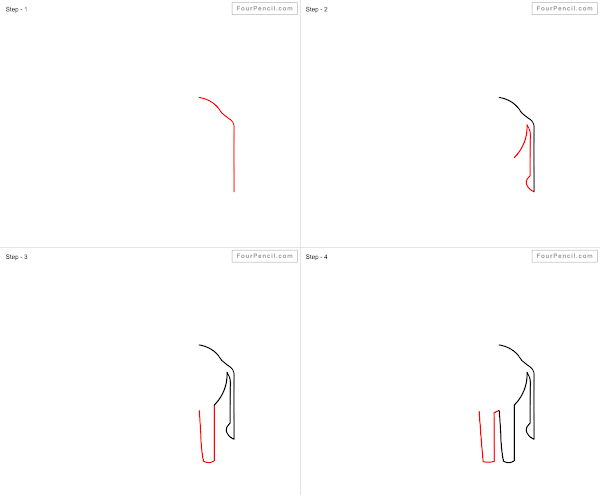
How to draw Donkey for kids - step by step - Fact - There are more than 40 million donkeys in the world, mostly in underdeveloped countries, where they are used principally as draught or pack animals. Working donkeys are often associated with those living at or below subsistence levels. Small numbers of donkeys are kept for breeding or as pets in developed countries.

How to draw Donkey for kids - step by step - Fact - A male donkey or ass is called a jack, a female a jenny or jennet; a young donkey is a foal. Jack donkeys are often used to mate with female horses to produce mules.

How to draw Donkey for kids - step by step - Fact - Asses were first domesticated around 3000 BC, probably in Egypt or Mesopotamia, and have spread around the world. They continue to fill important roles in many places today.

How to draw Donkey for kids - step by step - Fact - While domesticated species are increasing in numbers, the African wild ass and another relative, the onager, are endangered. As beasts of burden and companions, asses and donkeys have worked together with humans for millennia.
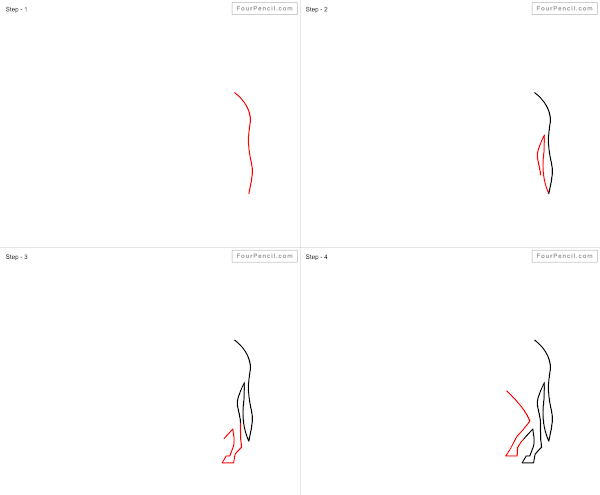
How to draw Donkey for kids - step by step - Fact - Traditionally, the scientific name for the donkey is Equus asinus asinus based on the principle of priority used for scientific names of animals. However, the International Commission on Zoological Nomenclature ruled in 2003 that if the domestic species and the wild species are considered subspecies of one another, the scientific name of the wild species has priority, even when that subspecies was described after the domestic subspecies.

How to draw Donkey for kids - step by step - Fact - This means that the proper scientific name for the donkey is Equus africanus asinus when it is considered a subspecies, and Equus asinus when it is considered a species.

How to draw Donkey for kids - step by step - Fact - At one time, the synonym ass was the more common term for the donkey. The first recorded use of donkey was in either 1784 or 1785. While the word ass has cognates in most other Indo-European languages, donkey is an etymologically obscure word for which no credible cognate has been identified.

How to draw Donkey easy - step by step - Fact - From the 18th century, donkey gradually replaced ass. The change may have come about through a tendency to avoid pejorative terms in speech, and be comparable to the substitution in North American English of rooster for cock, or that of rabbit for coney, which was formerly homophonic with cunny.
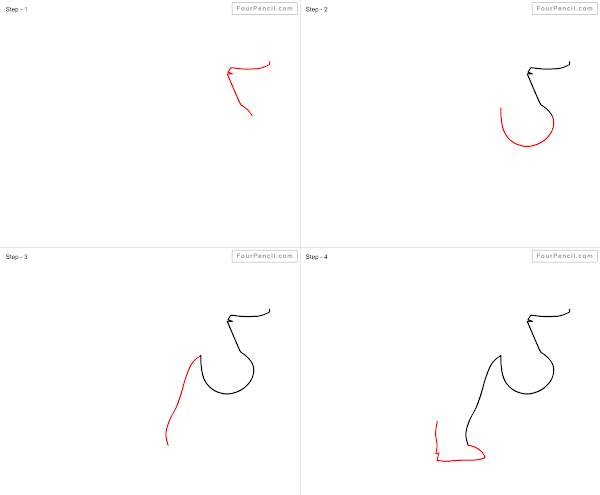
How to draw Donkey easy - step by step - Fact - By the end of the 17th century, changes in pronunciation of both ass and arse had caused them to become homophones. Other words used for the ass in English from this time include cuddy in Scotland, neddy in southwest England and dicky in the southeast;[11] moke is documented in the 19th century, and may be of Welsh or Gypsy origin.

How to draw Donkey for Beginners - Fact - In the United States, the Spanish burro is used both specifically for the feral donkeys of Arizona, California and Nevada, and, west of the Mississippi, generically for any small or standard donkey.

How to draw Donkey for Beginners - Fact - Donkeys vary considerably in size, depending on breed and management. The height at the withers ranges from 7.3 to 15.3 hands (31 to 63 inches, 79 to 160 cm), and the weight from 80 to 480 kg (180 to 1,060 lb).

How to draw Donkey for Children - Fact - Working donkeys in the poorest countries have a life expectancy of 12 to 15 years;[14] in more prosperous countries, they may have a lifespan of 30 to 50 years.

How to draw Donkey for Children - Fact - Donkeys are adapted to marginal desert lands. Unlike wild and feral horses, wild donkeys in dry areas are solitary and do not form harems. Each adult donkey establishes a home range; breeding over a large area may be dominated by one jack.
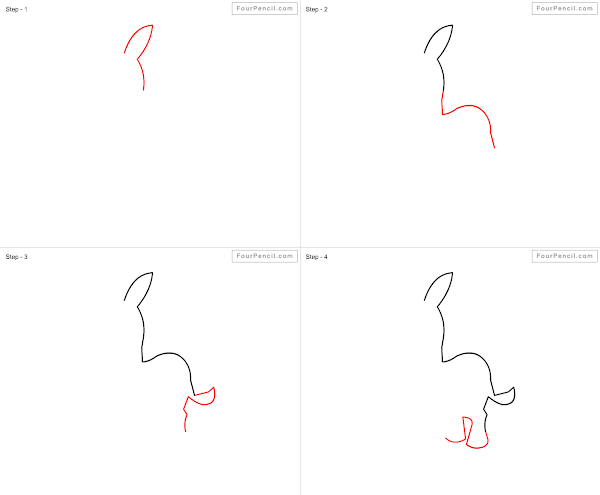
How to draw Donkey for Preschoolers - Fact - The loud call or bray of the donkey, which typically lasts for twenty seconds and can be heard for over three kilometres, may help keep in contact with other donkeys over the wide spaces of the desert.

How to draw Donkey for Preschoolers - Fact - Donkeys have large ears, which may pick up more distant sounds, and may help cool the donkey's blood. Donkeys can defend themselves by biting, striking with the front hooves or kicking with the hind legs.


 How to draw Donkey for kids - step by step - Fact - There are more than 40 million donkeys in the world, mostly in underdeveloped countries, where they are used principally as draught or pack animals. Working donkeys are often associated with those living at or below subsistence levels. Small numbers of donkeys are kept for breeding or as pets in developed countries.
How to draw Donkey for kids - step by step - Fact - There are more than 40 million donkeys in the world, mostly in underdeveloped countries, where they are used principally as draught or pack animals. Working donkeys are often associated with those living at or below subsistence levels. Small numbers of donkeys are kept for breeding or as pets in developed countries.  How to draw Donkey for kids - step by step - Fact - A male donkey or ass is called a jack, a female a jenny or jennet; a young donkey is a foal. Jack donkeys are often used to mate with female horses to produce mules.
How to draw Donkey for kids - step by step - Fact - A male donkey or ass is called a jack, a female a jenny or jennet; a young donkey is a foal. Jack donkeys are often used to mate with female horses to produce mules.  How to draw Donkey for kids - step by step - Fact - Asses were first domesticated around 3000 BC, probably in Egypt or Mesopotamia, and have spread around the world. They continue to fill important roles in many places today.
How to draw Donkey for kids - step by step - Fact - Asses were first domesticated around 3000 BC, probably in Egypt or Mesopotamia, and have spread around the world. They continue to fill important roles in many places today.  How to draw Donkey for kids - step by step - Fact - While domesticated species are increasing in numbers, the African wild ass and another relative, the onager, are endangered. As beasts of burden and companions, asses and donkeys have worked together with humans for millennia.
How to draw Donkey for kids - step by step - Fact - While domesticated species are increasing in numbers, the African wild ass and another relative, the onager, are endangered. As beasts of burden and companions, asses and donkeys have worked together with humans for millennia.  How to draw Donkey for kids - step by step - Fact - Traditionally, the scientific name for the donkey is Equus asinus asinus based on the principle of priority used for scientific names of animals. However, the International Commission on Zoological Nomenclature ruled in 2003 that if the domestic species and the wild species are considered subspecies of one another, the scientific name of the wild species has priority, even when that subspecies was described after the domestic subspecies.
How to draw Donkey for kids - step by step - Fact - Traditionally, the scientific name for the donkey is Equus asinus asinus based on the principle of priority used for scientific names of animals. However, the International Commission on Zoological Nomenclature ruled in 2003 that if the domestic species and the wild species are considered subspecies of one another, the scientific name of the wild species has priority, even when that subspecies was described after the domestic subspecies.  How to draw Donkey for kids - step by step - Fact - This means that the proper scientific name for the donkey is Equus africanus asinus when it is considered a subspecies, and Equus asinus when it is considered a species.
How to draw Donkey for kids - step by step - Fact - This means that the proper scientific name for the donkey is Equus africanus asinus when it is considered a subspecies, and Equus asinus when it is considered a species.  How to draw Donkey for kids - step by step - Fact - At one time, the synonym ass was the more common term for the donkey. The first recorded use of donkey was in either 1784 or 1785. While the word ass has cognates in most other Indo-European languages, donkey is an etymologically obscure word for which no credible cognate has been identified.
How to draw Donkey for kids - step by step - Fact - At one time, the synonym ass was the more common term for the donkey. The first recorded use of donkey was in either 1784 or 1785. While the word ass has cognates in most other Indo-European languages, donkey is an etymologically obscure word for which no credible cognate has been identified.  How to draw Donkey easy - step by step - Fact - From the 18th century, donkey gradually replaced ass. The change may have come about through a tendency to avoid pejorative terms in speech, and be comparable to the substitution in North American English of rooster for cock, or that of rabbit for coney, which was formerly homophonic with cunny.
How to draw Donkey easy - step by step - Fact - From the 18th century, donkey gradually replaced ass. The change may have come about through a tendency to avoid pejorative terms in speech, and be comparable to the substitution in North American English of rooster for cock, or that of rabbit for coney, which was formerly homophonic with cunny.  How to draw Donkey easy - step by step - Fact - By the end of the 17th century, changes in pronunciation of both ass and arse had caused them to become homophones. Other words used for the ass in English from this time include cuddy in Scotland, neddy in southwest England and dicky in the southeast;[11] moke is documented in the 19th century, and may be of Welsh or Gypsy origin.
How to draw Donkey easy - step by step - Fact - By the end of the 17th century, changes in pronunciation of both ass and arse had caused them to become homophones. Other words used for the ass in English from this time include cuddy in Scotland, neddy in southwest England and dicky in the southeast;[11] moke is documented in the 19th century, and may be of Welsh or Gypsy origin.  How to draw Donkey for Beginners - Fact - In the United States, the Spanish burro is used both specifically for the feral donkeys of Arizona, California and Nevada, and, west of the Mississippi, generically for any small or standard donkey.
How to draw Donkey for Beginners - Fact - In the United States, the Spanish burro is used both specifically for the feral donkeys of Arizona, California and Nevada, and, west of the Mississippi, generically for any small or standard donkey.  How to draw Donkey for Beginners - Fact - Donkeys vary considerably in size, depending on breed and management. The height at the withers ranges from 7.3 to 15.3 hands (31 to 63 inches, 79 to 160 cm), and the weight from 80 to 480 kg (180 to 1,060 lb).
How to draw Donkey for Beginners - Fact - Donkeys vary considerably in size, depending on breed and management. The height at the withers ranges from 7.3 to 15.3 hands (31 to 63 inches, 79 to 160 cm), and the weight from 80 to 480 kg (180 to 1,060 lb).  How to draw Donkey for Children - Fact - Working donkeys in the poorest countries have a life expectancy of 12 to 15 years;[14] in more prosperous countries, they may have a lifespan of 30 to 50 years.
How to draw Donkey for Children - Fact - Working donkeys in the poorest countries have a life expectancy of 12 to 15 years;[14] in more prosperous countries, they may have a lifespan of 30 to 50 years.  How to draw Donkey for Children - Fact - Donkeys are adapted to marginal desert lands. Unlike wild and feral horses, wild donkeys in dry areas are solitary and do not form harems. Each adult donkey establishes a home range; breeding over a large area may be dominated by one jack.
How to draw Donkey for Children - Fact - Donkeys are adapted to marginal desert lands. Unlike wild and feral horses, wild donkeys in dry areas are solitary and do not form harems. Each adult donkey establishes a home range; breeding over a large area may be dominated by one jack.  How to draw Donkey for Preschoolers - Fact - The loud call or bray of the donkey, which typically lasts for twenty seconds and can be heard for over three kilometres, may help keep in contact with other donkeys over the wide spaces of the desert.
How to draw Donkey for Preschoolers - Fact - The loud call or bray of the donkey, which typically lasts for twenty seconds and can be heard for over three kilometres, may help keep in contact with other donkeys over the wide spaces of the desert.  How to draw Donkey for Preschoolers - Fact - Donkeys have large ears, which may pick up more distant sounds, and may help cool the donkey's blood. Donkeys can defend themselves by biting, striking with the front hooves or kicking with the hind legs.
How to draw Donkey for Preschoolers - Fact - Donkeys have large ears, which may pick up more distant sounds, and may help cool the donkey's blood. Donkeys can defend themselves by biting, striking with the front hooves or kicking with the hind legs. 


















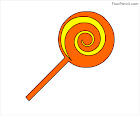
No comments:
Post a Comment